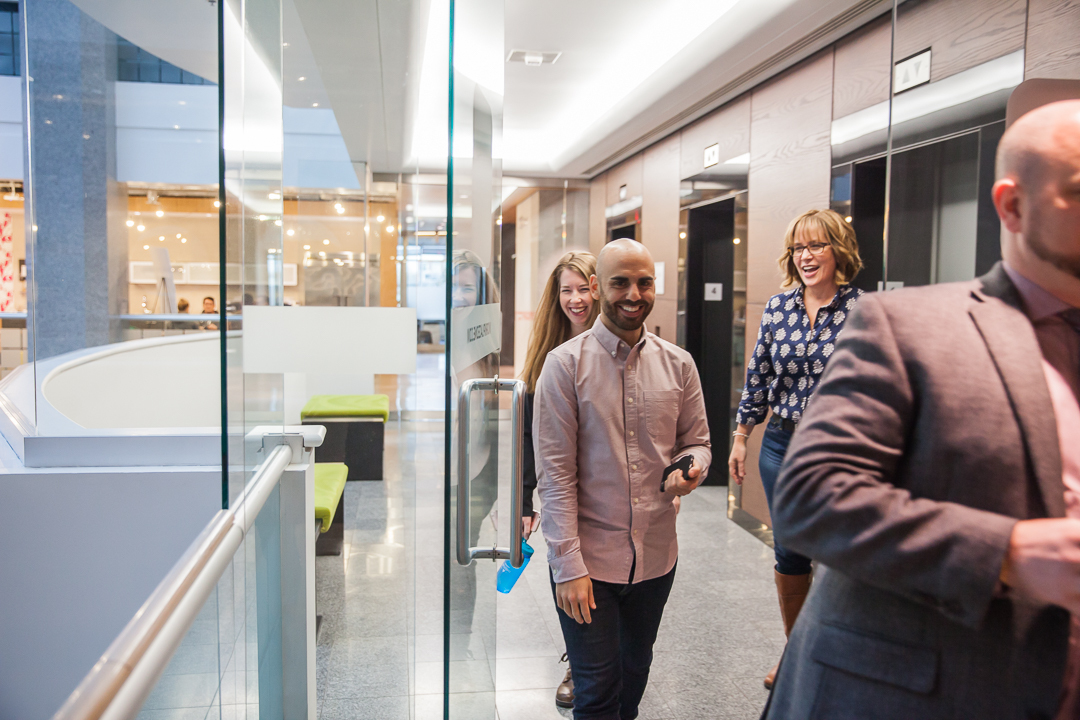The True Value of the Workplace Part 2: The Prosperity of the Team and Organization

We’ve all come to terms with the fact that our lives are not going back to “normal” but the constant promise of the bigger and better “new normal” doesn’t seem to be arriving any time soon either. While many will debate how well we seemed to navigate our way though the pandemic, we can all agree that none of us seemed to get much of a chance to stop and catch our breath after experiencing the toll it took on every aspect of our lives.
As organizations head into a winter where team’s once again face tremendous uncertainty, navigating the evolving workplace isn’t an easy task. There isn’t a one size fits all format and while you may be starting to understand what you need for the next few months, forecasting beyond that may seem impossible with the current economic climate.
Organizations across the board, even those that seemed bullet proof and even thrived during the pandemic are trying to cut costs and therefore are evaluating what part of their businesses are truly needed and the most valuable. In sum, a workspace a necessary and valuable asset and like any good investment, it just needs to be managed correctly to ensure it’s always helping an organization grow and profit, even in uncertain times. But how?
Flexible Workplaces Save Your Organization Money
They key word here is “flexible”. In this case, we’re referring to a workplace arrangement that actually works for your organization. Flexible workspaces like Workplace One, are designed to expand and contract with the needs of your organization and although we have different membership types, what your company’s workspace looks like within our portfolio is completely customizable and something we tailor directly to your team’s needs. This means, you don’t pay for things you don’t use or need. For example, if having a meeting room is something you only require for 2 hours, once a week, why would you pay for one full time as you would with traditional space? With flexible workspace solutions, these extra spaces can be added on an on-demand and a la carte basis to keep your monthly overheads low.
Our vast portfolio of solutions and short leasing terms also helps your team only pay for space when you actually use it. Therefore, if your team is growing, you can scale your space at the same rate. And when organizations are navigating ongoing change, you can also scale back your space within a reasonable timeframe as opposed to be locked into rigid and confined long leasing terms.
Our workspaces are also fully furnished and set up for when your leasing term begins. This turn-key solution means that you save your organization money not only by not having to manage workspace build outs and delays but by also not having to pay for your space during this time either. Easily transition from one space to another without a costly overlap and zero of the set-up headaches.
Our flexible and serviced workspaces are designed with premium office furnishings and amenities, so once again, the front-end loaded and high cost of purchasing these items outright isn’t something you need to budget for. Your team gets to have boutique styled lounges and sit to stand desks without making a huge investment in these expensive products yourself. Better yet, if your team scales back at any point, you aren’t left with these items that you’ve paid a premium for and no longer require.
Workplaces Build and Nurture Company Culture
Zoom calls and emails hold a significant level of value in the workplace and solve the problem of people needing to be in two places at once or on different timelines but contribute nothing to company culture. Efficiency and productivity need to be prioritized but what’s the point in that if you don’t have employees who are engaged, empowered, and inspired by where they work and who they work for and with? These feelings that individuals associate with their jobs and the organizations they work for have profound effects on the quality and quantity of work that they do.
Remote work added convenience and removed commutes which many argue gave them more time to get work done. There are debates if this did actually increase productivity, however how valuable can these added productive hours be if individuals are not in the office 2 to 3 days at least in a week to ensure their work is emblematic of the company culture, mission and values? These elements of culture require community, collaboration and proximity and offices provide the space where these grow and develop.

Positive and Well-Designed Workplaces Increase Employee Mental Health
While a strong company culture is beneficial for an organization by ensuring its mission and values are constantly behind the work that’s being done, it also makes employees feel connected to it and to others. One of the greatest tolls of the pandemic was the effect of isolation on mental health. More than any other daily routine that was disrupted, the lack of having an engaging workspace to go to on a daily basis made individuals feel disconnected and lonely. Our digital methods of communication did not provide people with the same sense of community and belonging that workplaces did and this may have been the issue that proved the true value of these spaces more than anything for your team.
Remote work also fuelled burnout across the board. The diminishing boundary of personal and professional spaces left workers feeling drained and ironically enough, not going into the office and working from home, made individuals feel like they couldn’t escape their work.
Giving your team balance and flexibility is no doubt the direction to move towards, however this must be done in balance and with some effective and well managed boundaries to ensure your organizations and team members expectations are aligned and realistic on both sides.
Workplaces Help You Manage Your Team Easier and More Effectively
The reality is that managing your team is easier when, quite simply, when you’re together in person. Managing an evolving group of unique individuals can be a lot of work even in the most steady of times, so the importance of having a central space to stay on top of your team’s goals and progress is essential. It’s no wonder that middle management suffered from the highest rates of burnout during remote work as discussed above.
Without consistent in person contact, it’s hard to identify when your colleagues are struggling or disengaged often until it’s too late. But most importantly, your organization functions on the dynamics of a team where the greatest value and contributions are made when everyone’s individual strengths, skills and talents are working together.